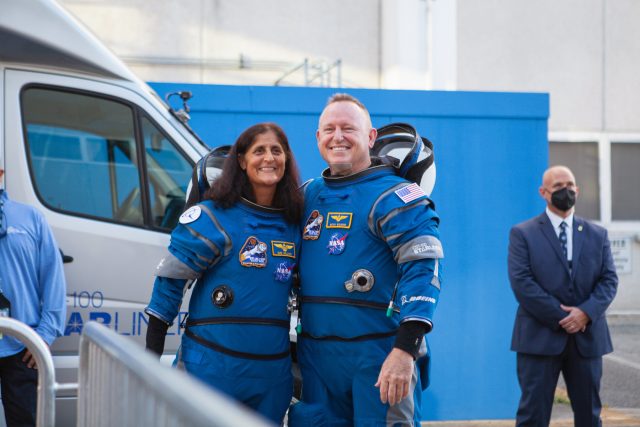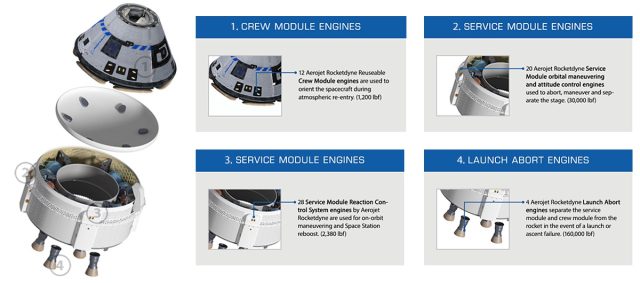After years of delays, Boeing’s Starliner spacecraft finally launched into orbit from Florida on Wednesday, sending two veteran NASA astronauts on a long-postponed commissioning voyage to the International Space Station.
The Starliner capsule launched aboard a United Launch Alliance Atlas V rocket at 10:52 a.m. EDT (14:52 p.m. UTC). Fifteen minutes later, after detaching the core stage, which is equipped with two fixed boosters and Russian RD-180 engines, the Atlas V’s Centaur upper stage detached Starliner at its target site and began a roughly 26-hour pursuit of the space station. Docking with the space station is scheduled for Thursday at 12:15 p.m. EDT (16:15 p.m. UTC), and NASA astronauts Butch Wilmore and Suni Williams will spend at least a week there before returning to Earth.
NASA Administrator Bill Nelson, speaking shortly after the launch on Wednesday, said former U.S. Navy pilots Wilmore and Williams would “test this vehicle from top to bottom” to ensure Boeing’s Starliner was operationally ready for a six-month crew-replacement mission to the ISS.
Long awaited
It’s a big moment for NASA and Boeing. The Starliner test launch puts NASA one step closer to acquiring two independent commercial spacecraft to carry astronauts into low Earth orbit, a cornerstone of an initiative the space agency began working on 15 years ago. For Boeing, the first launch of astronauts aboard Starliner comes as the once-prestigious aerospace contractor is grappling with safety concerns about its workhorse 737 jetliner.
NASA awarded Boeing a $4.2 billion contract in 2014 to complete development of the Starliner spacecraft, with the goal of flying astronauts aboard the capsule starting in 2017. The company first unveiled what would become Starliner (then known only as the CST-100) at the Farnborough Air Show in 2010.
In a 2010 announcement, Boeing officials said they hoped to declare the CST-100 spacecraft operational in 2015, but Congress initially did not allocate the funding NASA needed to support the development of a new commercial crewed spacecraft following the retirement of the Space Shuttle. Boeing has since encountered numerous technical issues, including a major fuel leak during ground testing, the cancellation of an unmanned test flight to the space station in 2019, and further delays due to valve corrosion. Another test flight in 2022 has met all of Boeing’s major goals, making it ready for crewed test flights.
But the schedule fell behind again last year when officials discovered that Boeing had mistakenly used flammable tape on bundles of electrical wires inside the Starliner spacecraft. Engineers also found they needed to redesign parts of the capsule’s parachute system, and crewed test flights were pushed back to 2024. Those delays cost Boeing nearly $1.5 billion from its own coffers. Because NASA’s contract with Boeing was fixed-price, U.S. taxpayers weren’t responsible for the cost overruns.
Meanwhile, SpaceX’s Crew Dragon spacecraft, which NASA supported in its Commercial Crew Program along with Boeing, began flying astronauts in 2020. To date, it has launched 13 crewed missions for NASA and commercial customers.

Two crewed test flights of Starliner were attempted, on May 6 and June 1, but both were aborted due to a valve failure on the Atlas V rocket and a power failure on the launch pad’s ground computer. Between the two launch attempts, engineers discovered a small but persistent helium leak from Starliner’s service module. The helium the spacecraft uses to pump propellant from internal tanks to its steering thrusters is an inert gas and non-toxic, and managers ultimately determined that the leak was stable and did not add an unacceptable risk to the mission.
That resulted in approval to go ahead with the launch on June 1, followed by another countdown on Wednesday that culminated with the successful launch of Starliner. Milestones achieved early in the flight indicated the spacecraft was functioning well.
“We are off on our mission,” Wilmore radioed to the Mission Control Center in Houston on Wednesday afternoon, “and I’ll be honest with you, I wish I could have had you all with me on that ascent. It was very exciting.”
“I was a little shocked that we actually launched,” said Williams, who said the pair had boarded a Starliner capsule for the third time in the hopes of launching into space after two aborted launch attempts last month.
“It was pretty cool to jump off the planet and feel the Atlas V moving,” Williams said. “There were a few jolts here and there, and a few G’s.”
This also marks the first time that crew has launched aboard ULA’s Atlas V rocket, which completed its 100th mission on Wednesday, and the first time that astronauts have launched aboard a rocket from the legendary Atlas family of rockets since the final flight of NASA’s Project Mercury in 1963.
A few hours after launch, Wilmore and Williams took turns piloting the Starliner, demonstrating that the crew could pilot the craft manually if the automation failed. All of these checkouts appeared to go well.
“Suni and I have piloted it manually, and it’s much more accurate than the simulator,” Wilmore says. “It stops exactly where you want it to stop. It’s really quite amazing how accurate it is.”
One leak becomes three
Wilmore met with ground controllers on Wednesday afternoon and said the Starliner test flight had been “going smoothly” so far. But two new helium leaks were discovered in the Boeing capsule as the crew prepared for an overnight sleep shift ahead of Thursday’s docking with the space station.
The spacecraft’s service module houses most of Starliner’s propulsion system, including 20 large orbital maneuvering engines and 28 low-power Reaction Control System thrusters for fine-tuning and fine-tuning. Starliner has four doghouse-shaped propulsion pods around the perimeter of the service module, with each thruster pack running lines of hydrazine fuel, nitric oxide oxidizer, and helium pressurizer.
Two helium manifolds supply helium to each doghouse. The leak discovered before Starliner’s launch was traced to a flange on one manifold in the port doghouse pod. Late Wednesday, engineers found two more helium leaks, one from another manifold in the port doghouse and one from a doghouse at the top of the service module.
Boeing engineer Brandon Burrows, during a discussion broadcast live on NASA TV during the Starliner test flight, described the two new helium leaks as “minor” and that they did not show up during troubleshooting of known leaks on the ground.

The discovery brings to light that three of Starliner’s eight helium manifolds are showing signs of leaking.
“We appear to have detected a couple more helium leaks,” said engineer Neil Negata, the spacecraft communications officer (CAPCOM) in mission control. “Let us know, we’re ready to find out exactly what it means to detect another helium leak,” Wilmore radioed to the ground a few minutes later.
Negata told Wilmore that the newly discovered helium leaking manifold would be isolated, while the manifold that was known to be leaking before launch would be left open. “This will allow the team to take control of the spacecraft,” Burrows said.
After Wilmore and Williams were awakened from their sleep shift early Thursday morning, ground controllers told the crew the spacecraft could still go ahead with its rendezvous and docking with the space station.
Before getting used to launching with a known helium leak, engineers determined that the Starliner spacecraft could handle up to four more helium leaks, even if an existing leak worsens, according to Steve Stich, NASA’s commercial crew program manager.
“This is a difficult system,” Stich told reporters last month. “It’s a high-pressure system, and helium is a very small molecule, so it’s prone to leaks.”
Late Wednesday night, with two helium manifolds closed, six of the spacecraft’s 28 Reaction Control System thrusters were disabled. The capsule was capable of operating on some of its thrusters, and Burrows said Boeing engineers believe “the helium system is safe for flight.”
Mission control told the Starliner crew early Thursday that they would recover the crippled jet before docking.
“This is not unexpected and we have planned for cases like this,” Burrows said. “The team will be working to ensure we are in the proper configuration to complete our mission of docking and rendezvous with the ISS.”
More information on the helium leak was updated at 7 a.m. EDT (11 a.m. UTC) on Thursday.


